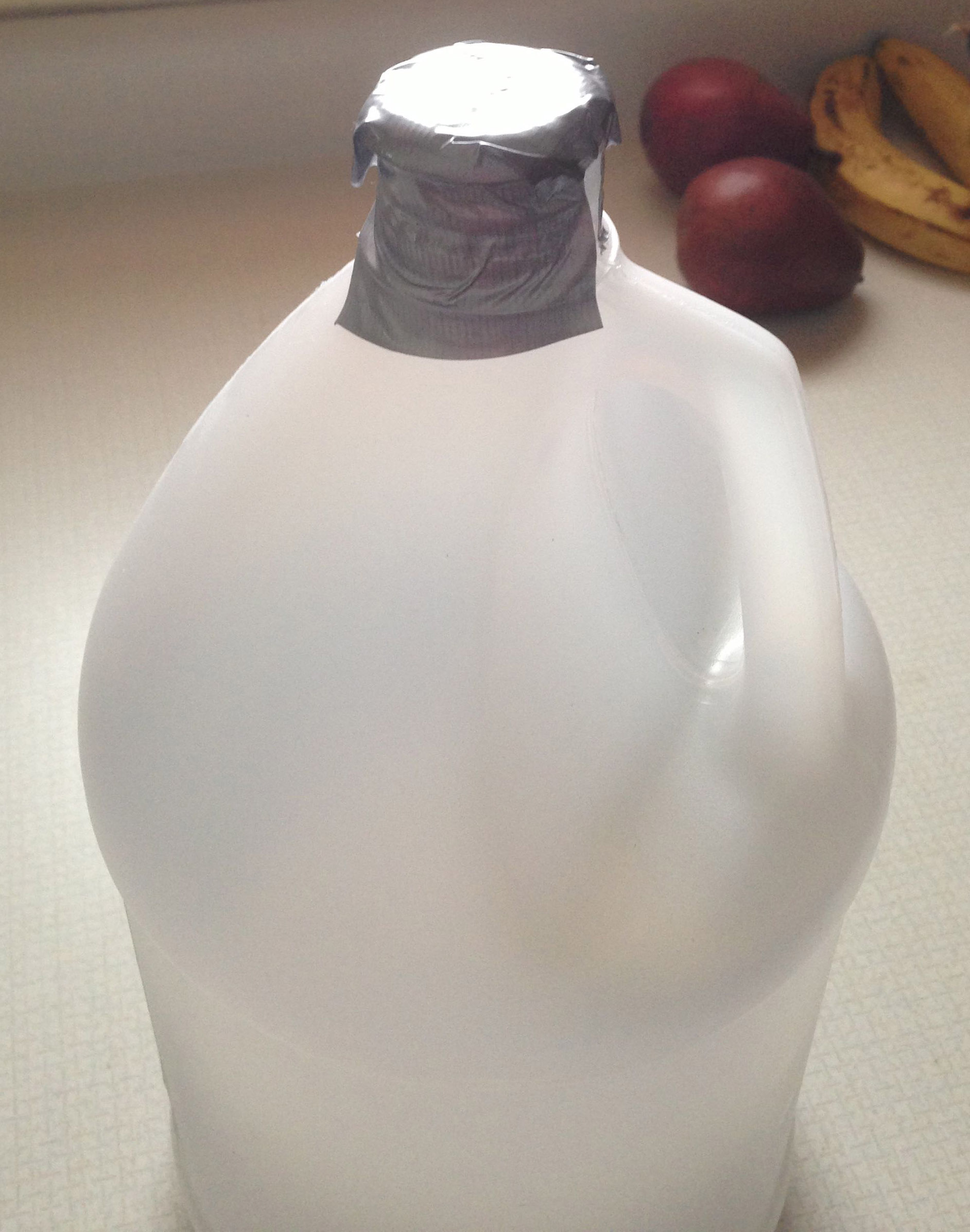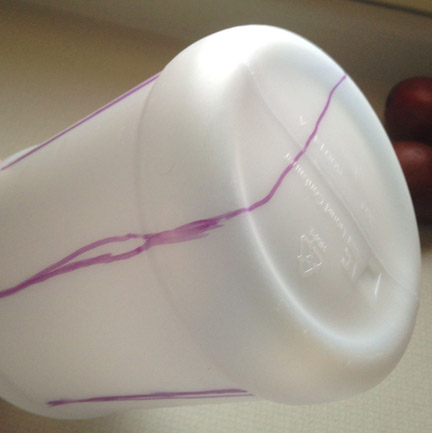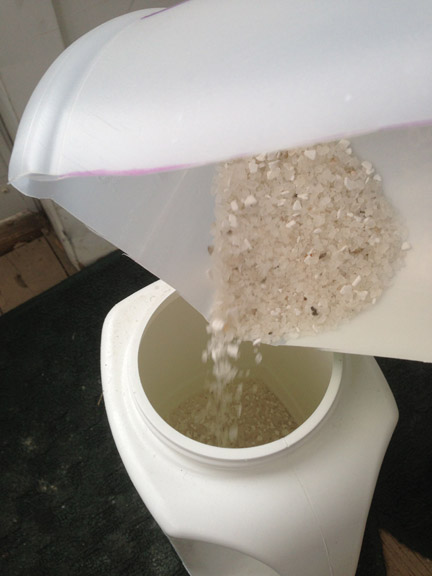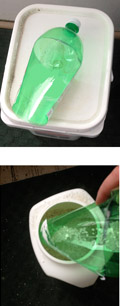 As of the writing of this entry, (Monday morning, February 2, 2013), it’s 21 degrees outside and snowing. Again. We’re looking at 2 to 4 inches of snow coming in.
As of the writing of this entry, (Monday morning, February 2, 2013), it’s 21 degrees outside and snowing. Again. We’re looking at 2 to 4 inches of snow coming in.
I have a snow shovel to clear the front and back walks of my 1880-era little faux farmhouse that’s really on a main drag in a small city. I have a salt/calcium mix in a fifty-pound box to help keep the walks and porches clear…but I don’t have a scoop to get the salt out of the box. I sure don’t want to get bundled up (again) and make a trip to the store. What to do?
Break out the kitchen shears. (You may want to sharpen them before starting this project!)
I have an empty 2-liter soda bottle and an empty vinegar bottle. And according to web sources, especially Pinterest, I can make scoops out of these suckers.

Vinegar Jug
They’re sturdy, and they have to be good for something once they’re empty, right? Well, vinegar jugs sure are. After I washed and rinsed the jug, and dried the outside, and drained the inside, I was ready to start. I had to seal the jug, because I’d lost the lid. I did have one of those outlet cover plugs to hand and that fit well, and duct taped into place quickly. (You could use a cardboard circle or something similar, and duct tape away.)
Good to know: Make sure you center your cuts on the jug handle. That handle will be the center support of your scoop, and it must be in the bottom center! So when I made my second set of cutting lines, I made sure the handle was centered. (I missed that step the first time I did the cutting lines, but luckily, figured it out before I cut into the jug!)

I cut completely into and through the body of the jug, following the cutting line. Then I cut across the bottom.
Be sure the cutting line there divides the bottom in two, because the ‘corners’ will come in handy later. You make the bottom any size you want. I wanted a lot of room so I could use the scoop as an ice melt scatterer for my teeny front porch.
After I removed the cut panel and pitched it into the recycle bin, I carefully dried the inside of the bottle with a dishtowel. The cut edges can be sharp.
I also trimmed any ragged edges so they were smooth, which will make it easy to pour and spread the ice melt.

Then I dug in!
The rigidity of the vinegar bottle scoop was perfect for scooping up this heavy material. And the ‘corners’ on the bottom help funnel the salt into the smaller bottle that I use when I spread the salt and calcium on larger areas around the house.
The next bottle I empty will be converted into a kitty litter scoop, to move litter into and out of a 40″x25″ cat box. That cat box takes a container and a half of litter, and my litter comes in 35 pound containers–not the easiest things to fill or empty.
Soda Bottle Scoop
Sure, it’s a little lightweight, but it still works hard! When I cut my old soda bottle into a scoop, I followed the same idea as the vinegar bottle.

However, because the sides are so flexible, I realized it could also function as a funnel. So I cut the bottom completely off the bottle.
The neck of the bottle will be your handle, so as long as you have your cuts placed evenly on either side of the neck, you should be fine. This scoop is much easier to make, because the soda bottle plastic is much lighter than the vinegar bottle plastic and cuts more easily.
Although this scoop must be supported underneath when I dig into the ice melt, being able to curl the sides into a funnel when I transfer the material into a smaller container is pretty convenient. I can see making a few more of these and having them ready when I put my container plants in. It’ll be a snap to transfer potting soil, composted material and fertilizer, especially into the pot that holds over 70 pounds of soil!
Tuesday, February 5 addendum: This morning, when I went to scoop ice melt to help keep the walks I just shoveled clear, I found, halfway down in the salt bin, a thing masquerading as a scoop. It looks more like a detergent bottle lid, really. Not quite sure what I’m going to do with it, since my homemade scoops are so much more practical…maybe use it as a mold to cast round soaps? We’ll see.




























